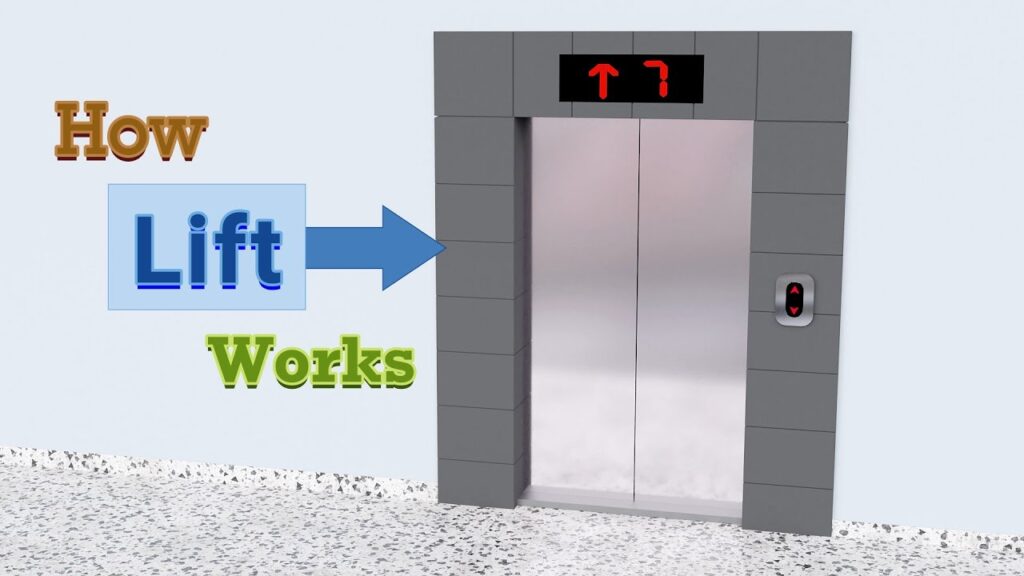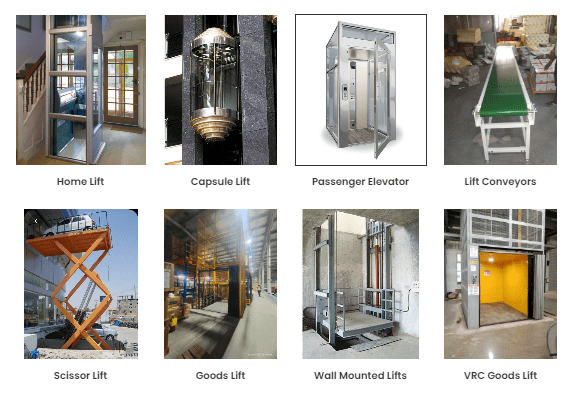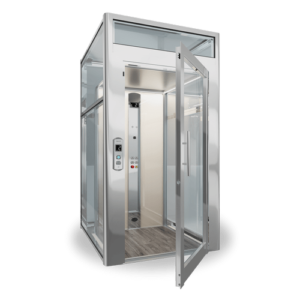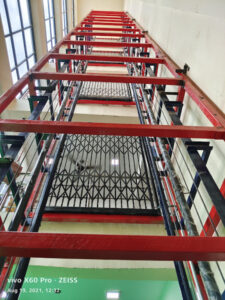In this article I will tell you about elevator working principal with how much type elevator exist so, If you don’t know about this, don’t worry this article will do all dout clear and only you need to read this article for understand of how elevator is worked and what principal behind

What is Elevator (Lift)?
An elevator, also known as a lift, is a type of vertical transportation device that is designed to move people or goods between floors (levels) of a building, structure, or other multi-story facilities.
Elevators are powered by various types of machinery, including electric motors and hydraulic systems, and typically consist of a cab (also called a car), doors, controls, and various safety features such as emergency brakes and alarms.
Elevators have greatly improved accessibility and convenience in high-rise buildings, allowing people to easily move between floors without the need for stairs. They are also widely used in industrial settings to transport goods and materials between different levels of a warehouse or factory.
What is working of Elevator?
The working of an elevator is based on the principle of counterweights. When an elevator cab is loaded, it becomes heavier and this increase in weight is balanced by an equal decrease in the weight of the counterweight. The difference in weight between the cab and the counterweight provides the force that moves the elevator cab up or down along its track.
Here’s a general overview of the basic components and their functions in an elevator system:
1. Cab: This is the compartment that transports people or goods between floors. It is usually equipped with doors, controls, lights, ventilation, and various safety features.
2. Hoistway: This is the shaft or opening in the building that the cab travels up and down in.
3. Rope or Cable: The cab is attached to a rope or cable that runs over a pulley system at the top of the hoistway. The rope or cable is used to lift and lower the cab.
4. Counterweight: This is a heavy weight that is attached to the opposite end of the rope or cable from the cab. Its purpose is to balance the weight of the cab and to help reduce the amount of power needed to move the elevator.
5. Motor: An electric motor is used to drive the pulley system that lifts and lowers the cab. The motor can be controlled by a control panel in the cab, or by buttons located on each floor outside the elevator.
6. Control System: This is the electronic system that controls the movement of the elevator cab. It monitors the position of the cab, the weight of the load, and the speed of the cab. It also manages the doors, lights, and other safety features.
7. Brakes: Elevators are equipped with brakes to stop the cab if there is an emergency or if the control system malfunctions.
When a person wants to use the elevator, they push a button on the control panel inside the cab or on a button panel located outside the cab on each floor. This sends a signal to the control system, which determines which cab is closest to the person’s desired floor and dispatches it to that floor.
The control system then directs the cab to the desired floor, opens the doors, and allows the person to enter or exit the cab. The control system then closes the doors and directs the cab to its next destination.
Different types Elevator?
There are several types of elevators, each designed to meet specific needs and requirements. Here are some of the most common types:

Passenger Elevators: These are the most common type of elevators and are designed to carry people between floors in a building. They typically come in various sizes and capacities, ranging from small residential elevators to large commercial elevators that can carry dozens of people.

Freight Elevators: These elevators are designed to transport goods and materials between floors in a building. They are typically larger and more heavy-duty than passenger elevators, and often come with loading docks and larger cab sizes to accommodate larger items.
Residential Elevators: These elevators are designed for use in private homes, typically for people with mobility challenges. They are smaller and less expensive than commercial elevators and can be customized to fit the specific needs of the homeowner.

Hydraulic Elevators: These elevators use a hydraulic system to lift and lower the cab. The system consists of a pump, a cylinder, and a fluid, usually oil. The pump creates pressure that moves the cylinder, which in turn moves the cab.

Traction Elevators: These elevators use electric motors to lift and lower the cab. They are more efficient than hydraulic elevators and can travel faster and over longer distances. They are also typically used in taller buildings.
Dumbwaiter Elevators: These are small elevators designed to transport food, dishes, or other items between floors in a restaurant or other commercial setting.
Observation Elevators: These elevators are equipped with large windows and are designed to provide scenic views. They are often found in tourist attractions or tall buildings.
Machine-Room-Less Elevators: These elevators have the machine and control components located inside the hoistway, reducing the need for a separate machine room. They are often used in buildings with limited space.
Each type of elevator is designed to meet the specific needs and requirements of its intended use, and the choice of which type to use will depend on factors such as the size and use of the building, the height of the building, and the needs of the people who will be using it.
Conclusion:
Friend I have been tell you already full in detail about what principal or working of elevator (lift) in upper article . so, now you know about everythimg about elevator. If you need for more details about elevator prices, manufacture best company.
visit my website home page:- Click Here
